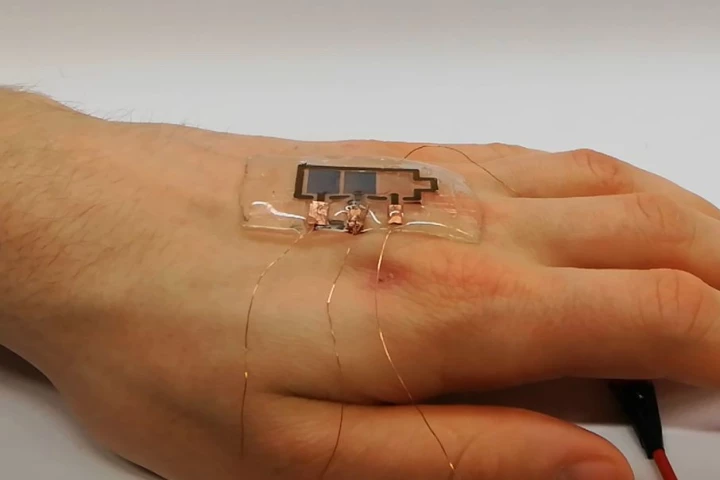Electrochromic
-
Windows are pretty basic necessities for letting in light and heat, but you don’t always want both at once. Now engineers at North Carolina State University have developed a new material that allows windows to easily switch between three modes.
-
Seeking a passive way to keep buildings cool in hot weather and warmer in the colder months, researchers have developed a new electrochromic shape-shifting material. It switches from solid to liquid and from clear to opaque at set temperatures.
-
Born in 2020, the Maserati MC20 reminds us that light shines even in the darkest times. And in this case, that light gives new life, leading to the much-anticipated convertible MC20 Cielo, a butterfly-doored spyder with electrochromic roof.
-
As sunlight passes through a building's windows it can cause indoor temperatures to rise, to the point that the structure's air conditioning system has to be used. A new window material, however, blocks incoming heat while staying mostly transparent.
-
You may have heard of electrochromic windows that can be electronically switched between clear and tinted states. Well, the same technology has been applied to a new material that could both heat and cool buildings, if mounted on their outside walls.
-
Tech startup Ampere has smartened up the humble sunglasses with Dusk, a pair of shades that change tint on demand via a phone app or a button press. A deluxe model also packs built-in speakers and a microphone for making calls.
-
E-waste is a growing problem, so if an electronic component can't be reused or recycled, it should at least be biodegradable. That's where an experimental new electronic display comes in, as it can be composted when no longer needed.
-
If you're tired of sliding the shades up and down on airplane windows, then you might want to fly on a Boeing 777X. This week, it was announced that some of the aircraft will forgo the shades for electronically-dimmable windows (EDWs).
-
Future windows could change their tint or opacity on demand to keep out unwanted heat, light or nosy neighbors. A team from Princeton has now developed a self-powered “smart window” system that uses a transparent solar cell to harvest UV energy from sunlight.
-
Electrochromic glass that switches from translucent to transparent and vice versa is currently limited to a blue tint. That's set to change with a new manufacturing technique that increases the color options on offer, while also speeding up the switching process by almost 10 times.
-
Companies are experimenting with ways to balance glass' ability to let light in with the need for a little privacy. Now, Kinestral has unveiled a new system of smart-tinting glass called Halio, which can be adjusted manually or set up to switch automatically.
-
Current electrochromic window tinting technologies are generally slow to change state, struggle to achieve high levels of darkness, and rely on a constant current to maintain their tint. A team at MIT has developed an energy-efficient thin film material that overcomes these shortcomings.
Load More











